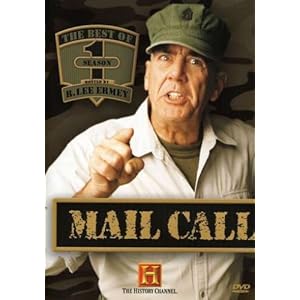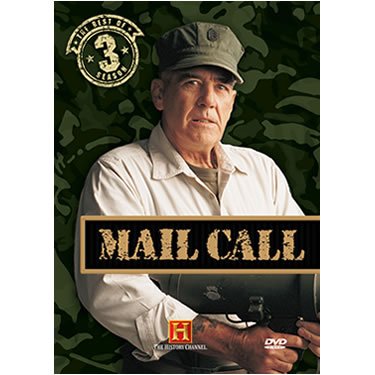Gun salutes are the firing of cannons or arms as an (military or naval) honor. The custom originates in naval tradition, where a warship would fire its cannons harmlessly out to sea, until all ammunition was spent, to show that it was disarmed, signifying the lack of hostile intent.
As naval customs evolved, 21 volleys came to be fired for heads of state, with the number decreasing with the rank of the recipient of the honor. While the 21-gun salute is the most commonly recognized, the number of rounds fired in any given salute will vary depending on the conditions. Circumstances effecting these variations include the particular occasion and, in the case of military and state funerals, the branch of service, and rank (or office) of the person to whom honors are being rendered.
Friday, September 3, 2010
Pararescue Jump
Pararescuemen (AFSC 1T2X1), also called PJs (a nickname pronounced 'pee jays'), are United States Air Force Special Operations Command (AFSOC) and Air Combat Command (ACC) operatives tasked with recovery and medical treatment of personnel in humanitarian and combat environments. They are the only members of the DoD specifically organized, trained and equipped to conduct personnel recovery operations in hostile or denied areas as a primary mission. PJs are also used to support NASA missions and have been used to recover astronauts after water landings. Of the 22 enlisted Air Force Cross recipients, 12 have been awarded to Pararescuemen. They wear the maroon beret as a symbol of their elite status. Part of the little-known Air Force Special Tactics community[4] and long an enlisted preserve, the Pararescue service began commissioning Combat Rescue Officers early in the 21st century. You can read the true account of one PJ in the book That Others May Live written by PJ Jack Brehm and Pete Nelson.
Tactical Operations Center
A tactical operations center (TOC) is a command post for police, paramilitary, or military operations. A TOC usually includes a small group of specially trained officers or military personnel who guide members of an active tactical element during a mission. Even though a form of TOC is used in any sort of tactical mission situation, in a non-military context it is generally associated with groups of "elite" police units called SWAT.
Gunny's Crib
Ermey read and answered questions submitted by viewers regarding weapons and equipment used by all branches of the U.S. military now or in the past, as well as by other armed forces in history. Ermey often takes his viewers on location to military training areas to film demonstrations. When not on location, Ermey broadcasts from a set resembling a military outpost, including a tent, a Jeep, and various other pieces of military gear which have changed throughout the series.
Bazooka
Bazooka is the common name for a man-portable rocket launcher widely fielded by the US Army. Also referred to as the "Stovepipe", the innovative bazooka was amongst the first-generation of rocket propelled anti-tank weapons used in infantry combat. Featuring a solid rocket motor for propulsion, it allowed for high explosive (HE) and high-explosive anti-tank (HEAT) warheads to be delivered against armored vehicles, machine gun nests, and fortified bunkers at ranges beyond that of a standard thrown grenade or mine. The universally-applied nickname arose from the M9 variant's vague resemblance to the tubular musical instrument of the same name invented and popularized in the 1930s by US comedian Bob Burns. An alternative etymology ascribed the name to the unique sound the weapon made when fired.
Thursday, August 19, 2010
Flyer 21 American Special Forces
In this clip from "Mail Call", R. Lee Ermey test-drives the Flyer 21, a lightweight off-roading multipurpose vehicle currently being used by American special forces.
Jetpack
Jet pack, rocket belt, rocket pack, and similar names, are various types of device, usually worn on the back, that use jets of escaping gases (or in some cases liquid water) to allow a single user to fly.
The concept of these devices emerged from science fiction in the 1920s and popularised in the 1960s as the technology became a reality. Currently, the only practical use of the jet pack has been extra-vehicular activity for astronauts. Despite decades of advancement in the technology, the challenges of Earth's atmosphere, Earth's gravity, and the human body (which is not well suited for this type of flight) remain an obstacle to its potential use in the military and as a means of personal transport.
The concept of these devices emerged from science fiction in the 1920s and popularised in the 1960s as the technology became a reality. Currently, the only practical use of the jet pack has been extra-vehicular activity for astronauts. Despite decades of advancement in the technology, the challenges of Earth's atmosphere, Earth's gravity, and the human body (which is not well suited for this type of flight) remain an obstacle to its potential use in the military and as a means of personal transport.
WWII D-day Allied Airborne Equipment
The success of the amphibious landings depended on the establishment of a secure lodgment from which to expand the beachhead to allow the build up of a well-supplied force capable of breaking out. The amphibious forces were especially vulnerable to strong enemy counterattacks before the build up of sufficient forces in the beachhead could be accomplished. To slow or eliminate the enemy's ability to organize and launch counterattacks during this critical period, airborne operations were used to seize key objectives, such as bridges, road crossings, and terrain features, particularly on the eastern and western flanks of the landing areas. The airborne landings some distance behind the beaches were also intended to ease the egress of the amphibious forces off the beaches, and in some cases to neutralize German coastal defence batteries and more quickly expand the area of the beachhead. The U.S. 82nd and 101st Airborne Divisions were assigned to objectives west of Utah Beach. The British 6th Airborne Division was assigned to similar objectives on the eastern flank. 530 Free French paratroopers from the British Special Air Service Brigade, were assigned to objectives in Brittany from 5 June to August.
Shrapnel
Shrapnel shells were anti-personnel artillery munitions which carried a large number of individual bullets close to the target and then ejected them to allow them to continue along the shell's trajectory and strike the target individually. They relied almost entirely on the shell's velocity for their lethality. The munition has been obsolete since the end of World War I for anti-personnel use, when it was superseded by high-explosive shells for that role. The functioning and principles behind Shrapnel shells are fundamentally different from high-explosive shell fragmentation. Shrapnel is named after Major-General Henry Shrapnel (1761–1842), an English artillery officer, whose experiments, initially conducted in his own time and at his own expense, culminated in the design and development of a new type of artillery shell.
Wednesday, August 18, 2010
Browning 30 Caliber Machine Gun
Browning .30 Caliber Machine Gun (M1919 Browning)
The M1919 Browning is a .30 caliber medium machine gun that was widely used during the 20th century. It was used as a light infantry, coaxial, mounted, aircraft, and anti-aircraft machine gun by the U.S. and many other countries, especially during World War II, the Korean War, and the Vietnam War. Although it began to be superseded by newer designs in the later half of the century (such as by the M60 machine gun), it remained in use in many North Atlantic Treaty Organization (NATO) countries and elsewhere for much longer. It is very similar in design to the larger .50 in (12.7 mm) M2 Machine Gun, which is also a Browning-designed weapon and is still in NATO service.
Many M1919s were rechambered for the new 7.62 × 51 mm NATO round and served into the 1990s, as well as up to the present day in some countries. The United States Navy also converted many to 7.62 mm NATO, and designated them Mk 21 Mod 0; they were commonly used on river craft in the 1960s and 1970s in Vietnam.
The M1919 was an air-cooled development of the standard US machine gun of World War I, the Browning M1917, as designed by John M. Browning.
What is .30 Caliber Machine Gun from its brother BAR?
The M1919 Browning is a .30 caliber medium machine gun that was widely used during the 20th century. It was used as a light infantry, coaxial, mounted, aircraft, and anti-aircraft machine gun by the U.S. and many other countries, especially during World War II, the Korean War, and the Vietnam War. Although it began to be superseded by newer designs in the later half of the century (such as by the M60 machine gun), it remained in use in many North Atlantic Treaty Organization (NATO) countries and elsewhere for much longer. It is very similar in design to the larger .50 in (12.7 mm) M2 Machine Gun, which is also a Browning-designed weapon and is still in NATO service.
Many M1919s were rechambered for the new 7.62 × 51 mm NATO round and served into the 1990s, as well as up to the present day in some countries. The United States Navy also converted many to 7.62 mm NATO, and designated them Mk 21 Mod 0; they were commonly used on river craft in the 1960s and 1970s in Vietnam.
The M1919 was an air-cooled development of the standard US machine gun of World War I, the Browning M1917, as designed by John M. Browning.
What is .30 Caliber Machine Gun from its brother BAR?
Grenade Launcher
SEASON 1
Grenade Launcher
A grenade launcher is a weapon that launches a grenade with more accuracy, higher velocity, and to greater distances than a soldier could throw it by hand.
Grenade launchers can either come in the form of standalone weapons (either single-shot or repeating) or attachments mounted under the barrel of a rifle. Alternatively, rifles have been designed to fire rifle grenades, either from their muzzle or from a spigot-type detachable launcher. Larger grenade launchers may be mounted on vehicles.
Question: Just how does the modern grenade launcher works?
Grenade Launcher
A grenade launcher is a weapon that launches a grenade with more accuracy, higher velocity, and to greater distances than a soldier could throw it by hand.
Grenade launchers can either come in the form of standalone weapons (either single-shot or repeating) or attachments mounted under the barrel of a rifle. Alternatively, rifles have been designed to fire rifle grenades, either from their muzzle or from a spigot-type detachable launcher. Larger grenade launchers may be mounted on vehicles.
Question: Just how does the modern grenade launcher works?
Monday, August 16, 2010
Mail Call Episodes Collection
Welcome to my blog!
In this blog, I gonna share some videos from History Channel: Mail Call hosted by Lee Ermey. Mail Call discuss about trivias behind Military stuffs. What kind of weapons? How to use? Where it made from? Who is behind this?
With the help of youtube, this blog, I made my own review. I have 1-7 Seasons of Mail Call. I'll gonna post it one by one. Leave your comments & suggestion about the clip.
MAIL CALL SEASON 1

CLICK HERE FOR SEASON 1 EPISODES!!
MAIL CALL SEASON 2

CLICK HERE FOR SEASON 2 EPISODES!! (Coming Soon)
MAIL CALL SEASON 3

CLICK HERE FOR SEASON 3 EPISODES!! (Coming Soon)
In this blog, I gonna share some videos from History Channel: Mail Call hosted by Lee Ermey. Mail Call discuss about trivias behind Military stuffs. What kind of weapons? How to use? Where it made from? Who is behind this?
With the help of youtube, this blog, I made my own review. I have 1-7 Seasons of Mail Call. I'll gonna post it one by one. Leave your comments & suggestion about the clip.
MAIL CALL SEASON 1

CLICK HERE FOR SEASON 1 EPISODES!!
MAIL CALL SEASON 2

CLICK HERE FOR SEASON 2 EPISODES!! (Coming Soon)
MAIL CALL SEASON 3

CLICK HERE FOR SEASON 3 EPISODES!! (Coming Soon)
Subscribe to:
Posts (Atom)